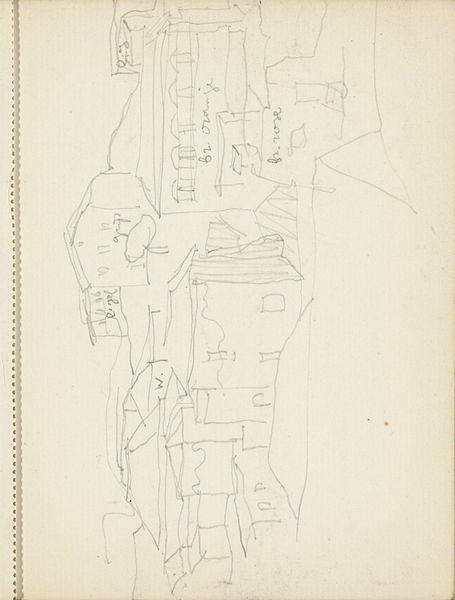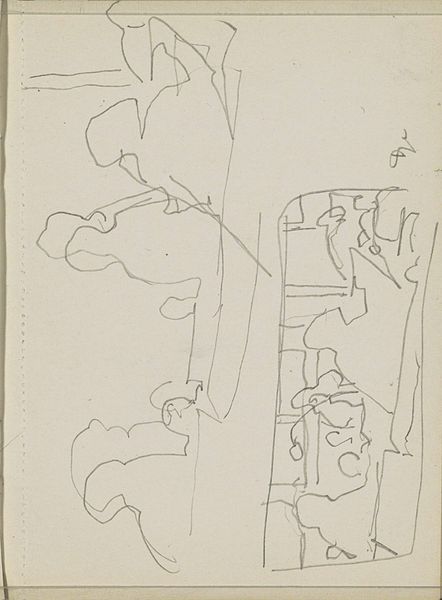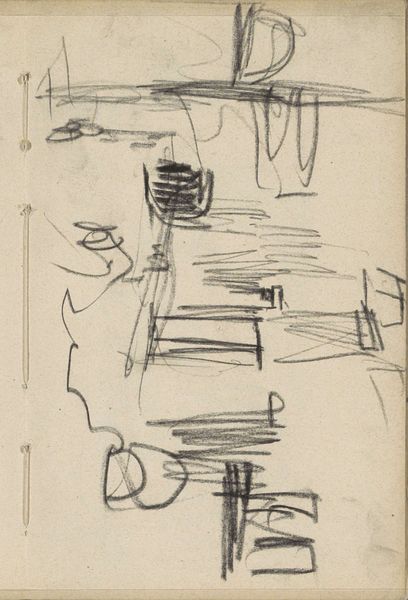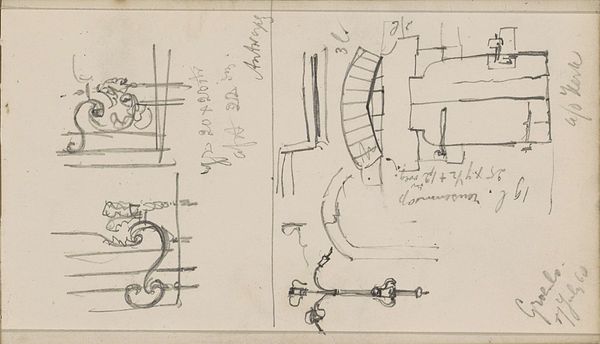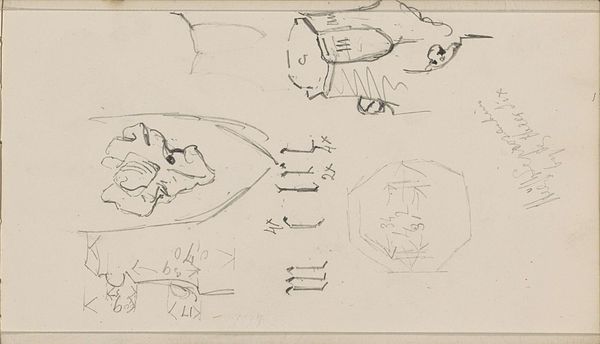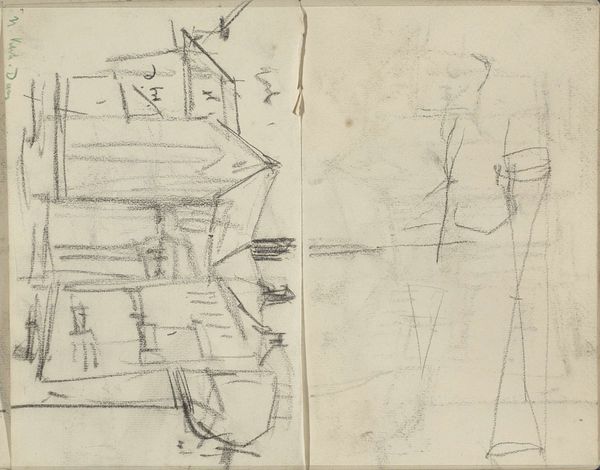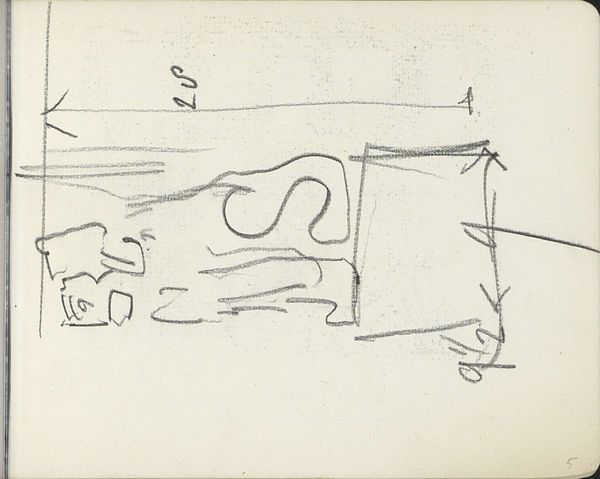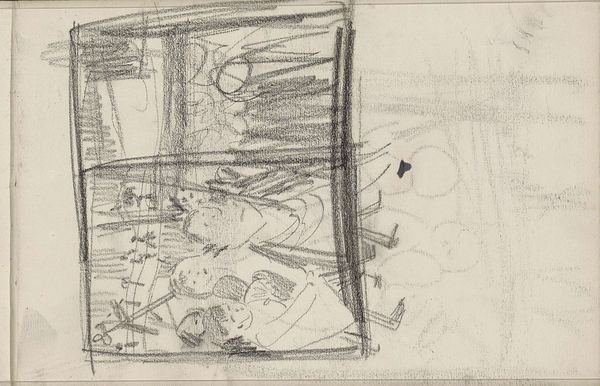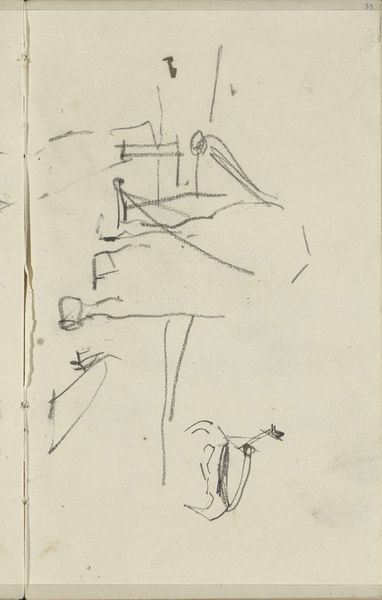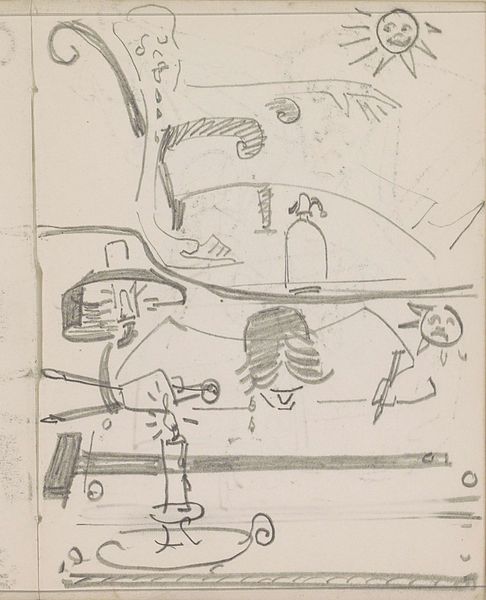
drawing, paper, pencil, architecture
#
drawing
#
dutch-golden-age
#
paper
#
pencil
#
architecture
#
realism
Copyright: Rijks Museum: Open Domain
Curator: This drawing by Isaac Gosschalk, dating from 1866 to 1868, offers us "Details van de architectuur van het Muiderslot." It’s a pencil drawing on paper, a medium offering immediacy and intimacy. Editor: My immediate reaction is to the unfinished nature of this work; it feels fragmented, like glimpses of a building rather than a coherent representation. The lack of tonal depth also lends it an airy, intellectual quality. Curator: The beauty here lies in how Gosschalk has diligently recorded details of this particular architecture and perhaps building techniques or a design concept. I’d like to note the labor that went into such a close investigation and careful recording of the features of Muiderslot. We see annotations in script amongst details in precise lines. Editor: True, there's precision but it almost buckles. Observe how line and form render detail; each section seems self-contained. I wonder if he considered the interplay between the various shapes as a formal, even abstract arrangement? There's rhythm despite the shifting perspectives, guided purely by aesthetic intent, not historical record. Curator: The intent, I believe, points to more than purely aesthetic design, perhaps an interest in craft or artisanship. We need to remember Gosschalk wasn’t only recording but interpreting and possibly re-imagining or using design details in the practice of building. Editor: But within that interpretation is the aesthetic choice. See how certain areas are intensely worked, lines overlapping to create denser areas of value. Yet, others are just faint sketches. He uses line to define form and light, and perhaps more interestingly to create mood through these selective densities of line work. Curator: I’m left with an appreciation for Gosschalk's dedication to both the artistic and material culture that informs this depiction. It highlights his place as both artist and craftsman. Editor: I agree it gives insight into both aesthetic and functional roles of such renderings, though I remain captured by the visual dynamic established through compositional tensions and release across the entire drawing.
Comments
No comments
Be the first to comment and join the conversation on the ultimate creative platform.

